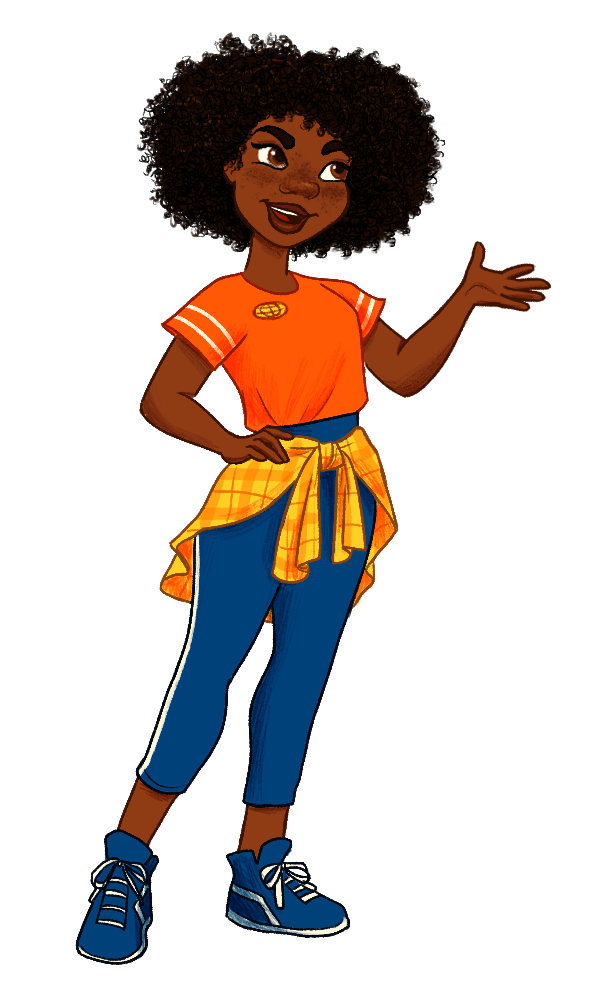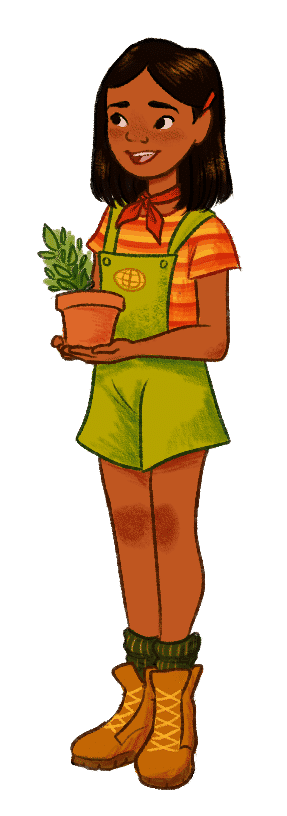uncover
Importance

Why are pollinators so important?
Pollinators, often small and easy to ignore, play a HUGE role in creating the natural world and ecosystems you know.
Here are a few reasons to be thankful for pollinators...

Fruits, Vegetables, Seeds, & Nuts
Pollinators are key for over 180,000 different plant species and more than 1,200 crops around the world. That means that one out of every three bites of food you eat only makes it to your fork because of pollinators! They create nature's salad bar, producing leaves, fruits, nuts, seeds, stems, and roots for us to eat.
Can you imagine a world without pumpkins, cocoa, strawberries, apples, tomatoes, or peppers?
Thank a pollinator!
Native Plants & Healthy Ecosystems
Scientists estimate that between 75% and 95% of all flowering plants on Earth depend on animal pollinators.
These plants become shelter, nesting sites, and food sources for other animals, supporting all sorts of food webs! Plants are also food for the many plant-eating animals called herbivores. The herbivores who eat these plant materials become the food for other animals in the food web. Can you imagine a world where animals didn't have enough food?
Thank a pollinator!
Fruits, Vegetables, Seeds, & Nuts
Pollinators are key for over 180,000 different plant species and more than 1,200 crops around the world. That means that one out of every three bites of food you eat (1:3) makes it to your fork because of pollinators. They create nature's salad bar, producing leaves, fruit, nuts, seeds, stems, and roots for us to eat.
Can you imagine a world without pumpkins, cocoa, strawberries, apples, tomatoes, or peppers?
Thank a pollinator!
Native Plants & Healthy Ecosystems
Scientists estimate that between 75% and 95% of all flowering plants on the earth depend on animal pollinators.
These plants become shelter, nesting sites, and food sources for other animals, supporting all sorts of food webs! Plants are also food for the many plant-eating animals called herbivores. The herbivores who eat these plant materials become the food for other animals in the food web. Can you imagine a world where animals didn't have enough food?
Thank a pollinator!
Clean Air, Soil, & Water
Flowering plants, including flowers, grasses, shrubs, and trees, take carbon dioxide out of the air and use it with water to create their energy (along with all other non-flowering plants). This is a process called photosynthesis. Through photosynthesis, plants 'exhale' the oxygen we breathe!
As plants grow, they extend their roots deep into the soil and their branches out into the air. Both the roots and branches of a plant help to absorb and filter water that falls in the form of rain and snow. They also help to keep soil in place. As plants die and decay, they provide the soil with rich nutrients that will feed new plants.
Can you imagine a world where plants stopped reproducing because they weren't being pollinated?
Thank a pollinator!
Clean Air, Soil, & Water
Flowering plants - including flowers, grasses, shrubs, and trees - along with all other non-flowering plants, take carbon dioxide out of the air and use it with water to create their energy. This is a process called photosynthesis. Through photosynthesis, plants 'exhale' the oxygen we breathe!
As plants grow, they extend their roots deep into the soil and their branches out into the air. Both the roots and branches of a plant help to absorb and filter water that falls in the form of rain and snow. They also help to keep soil in place. As plants die and decay, they provide the soil with rich nutrients that will feed new plants.
Can you imagine a world where these plants stopped reproducing because they weren't being pollinated?
Thank a pollinator!
Let's explore some of the known threats to pollinators



